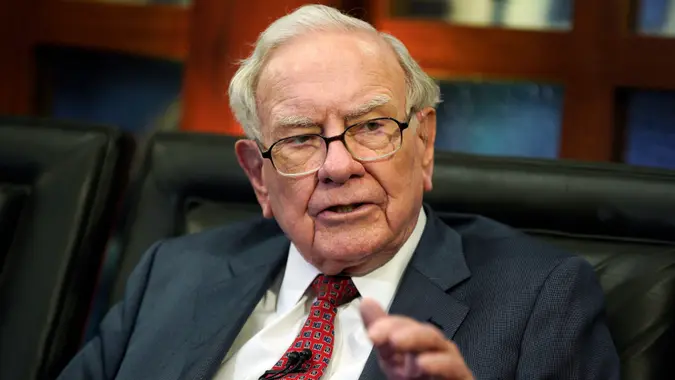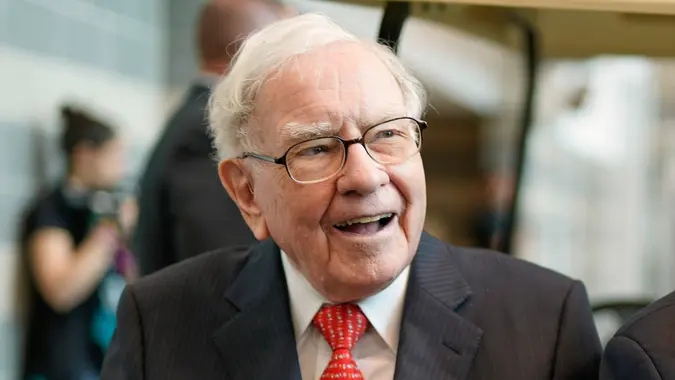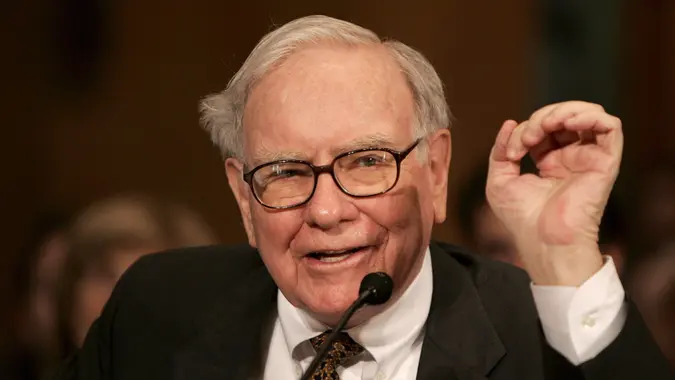Robert Kiyosaki Says This Long-Term Investment Strategy Can Help You Get Rich

Commitment to Our Readers
GOBankingRates' editorial team is committed to bringing you unbiased reviews and information. We use data-driven methodologies to evaluate financial products and services - our reviews and ratings are not influenced by advertisers. You can read more about our editorial guidelines and our products and services review methodology.

20 Years
Helping You Live Richer

Reviewed
by Experts

Trusted by
Millions of Readers
Robert Kiyosaki is the popular creator of the “Rich Dad Poor Dad” empire of financial books, podcasts and other media. In a late 2023 tweet, Kiyosaki wrote, “Rather than pretend to be Warren Buffet picking bottoms I am an average investor ‘accumulating’ the asset I want for the long term … You can become rich by being an average investor, using dollar-cost averaging to get rich.”
Here’s a look at what exactly dollar-cost averaging is, whether or not it’s effective and how Warren Buffett ties into the whole concept.
How Does Dollar-Cost Averaging Work?
Dollar-cost averaging is simply investing the same dollar amount on a regular basis, regardless of whether prices are low or high.
For example, if you own an S&P 500 index fund, you might invest $500 per month whether the market is making all-time highs every day or falling deeper into a bear market. The best way to accomplish this is by automating your investments, which can completely remove emotion from your investing. Otherwise, you might fall prey to the human tendency to try to time the market.
What Are the Benefits of Dollar-Cost Averaging?
The benefits of dollar-cost averaging are manifold. By its very nature, dollar-cost averaging makes you buy more when prices are low and less when prices are high. But perhaps even more importantly, it forces you into the habit of investing on a consistent basis.
That’s half the battle when it comes to long-term investment success. By regularly investing, you’ll by definition be taking advantage of market lows without having to try to time the market, which is notoriously difficult.
Are There Risks to Dollar-Cost Averaging?
The main risk to dollar-cost averaging is that you will by definition be getting an average price for your investments. While this eliminates the risk that you’ll be putting all your money in at the market high, it also means you won’t be buying with a lump sum at the market low. Thus, you could potentially be diminishing your upside returns by averaging into the market.
However, since it’s difficult if not impossible to buy in at the absolute market low, the benefits of dollar-cost averaging generally outweigh the risk. And if you’re planning to slowly invest in the market over time, this point is moot anyway.
Do Financial Experts Endorse This Strategy?
Dollar-cost averaging is recommended by many financial advisors because it removes the stress and uncertainty of trying to time the market. Even major investment houses ranging from Fidelity to Charles Schwab endorse the idea of dollar-cost averaging.
But perhaps the most famous proponent of the strategy is the billionaire CEO of Berkshire Hathaway, Warren Buffett. Although the “Oracle of Omaha” believes that market-beating returns are available to those who fully understand what they’re investing in, he acknowledges that not every investor falls into that category.
According to Buffett, “If you like spending six to eight hours per week working on investments, do it. If you don’t, then dollar-cost average into index funds.”
What About Kiyosaki’s Other Recommendations?
It’s worth noting that in addition to dollar-cost averaging into the stock market, Kiyosaki recommends accumulating gold, silver, bitcoin and real estate. This is where Kiyosaki’s investment philosophy gets a bit more controversial. While some advisors suggest allocating up to 5% of an investment portfolio to more speculative investments like bitcoin and precious metals, others argue that they’re not needed at all.
Buffett, for example, supports the concept of dollar-cost averaging, but he’s not a fan of gold or bitcoin. Regarding gold, Buffett once said “It’s a lot better to have a goose that keeps laying eggs [dividend-paying stocks] than a goose that just sits there and eats insurance and storage and a few things like that.”
His views on cryptocurrency are even more critical, as he called it “rat poison squared” in a 2018 interview.
The Bottom Line
Dollar-cost averaging is neither a guarantee of profits nor a protection from losses. For the average investor, though, it nonetheless carries significant benefits. Primary among these is the fact that it requires investors to continually participate in the market “through thick and thin” as Buffett often advocates.
It also allows investors to buy more when prices are low and less when they are high, protecting against putting all your money in the market at its peak. Since even professional investors can rarely beat the market’s return on a consistent basis, continually being involved is the best option for most individuals.
This is the point that Kiyosaki and Buffett are trying to make, and it’s a principle that makes good financial sense.
More From GOBankingRates
 Written by
Written by  Edited by
Edited by 

























